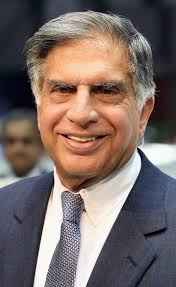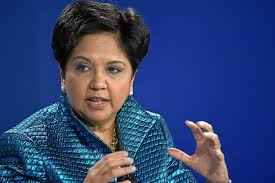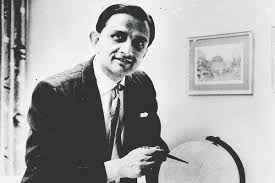Top Leadership Styles You Didn’t Know You Needed

In the world of leadership, the way we steer the ship can make all the difference. It’s not just about the title on your door; it’s about how you inspire, make decisions, and build a team. Understanding leadership styles isn’t about fitting into a mould but about finding your unique rhythm in the professional dance floor.
Think of it like this: leadership styles are the different dance moves in your repertoire. From the confident steps of Elon Musk to the collaborative twirls of Sundar Pichai, each leader has a style that defines their journey. So, let’s kick off this blog into the world of leadership styles – a journey that goes beyond titles and delves into the heart of what makes leaders truly effective.
What Are Some Of The Top Leadership Styles?
The Pioneer: Transformational Leadership
Transformational leaders are the architects of change, reshaping industries and leaving an indelible mark on organisational culture. Take Ratan Tata, for instance. As the founder of Tata Group, he wasn’t just a leader; he was a visionary. He had an uncanny ability to inspire and motivate his team to reach new heights. His transformative leadership style wasn’t just about products; it was about challenging the status quo and pushing the boundaries of innovation.
Transformational leaders, like Ratan Tata, bring a unique energy to the workplace. They instil a sense of purpose and passion that transcends the daily grind. It’s not merely about achieving goals; it’s about fostering an environment where every team member is motivated to contribute their best. In embracing this style, individuals become catalysts for positive change, consistently pushing the envelope and redefining what’s possible.
The Captain: Authoritarian Leadership
In the world of leadership styles, authoritarian leaders take the helm with a firm hand and a clear vision. Elon Musk, the force behind SpaceX and Tesla, is a prime example. Known for his bold decision-making and unwavering focus on objectives, Musk exemplifies the authoritarian leadership style. In the face of complex challenges, he doesn’t shy away from making tough calls and setting a decisive course for his organisations.
Authoritarian leaders thrive in environments where quick decisions are paramount. Musk’s leadership style is marked by a no-nonsense approach, demanding accountability and expecting results. This type of leadership is like a well-charted course – direct, efficient, and purposeful. It may not be for everyone, but in the right context, an authoritarian leader can steer a team through turbulent waters towards ambitious goals.
The Collaborator: Democratic Leadership
In the dynamic landscape of leadership, democratic leaders stand out for their inclusive approach. Sundar Pichai, the CEO of Google, is a prime example. Pichai understands the value of diverse perspectives and actively involves his team in decision-making. Democratic leaders foster an environment where everyone’s voice is heard, creating a collective sense of ownership and commitment.
The strength of democratic leadership lies in collaboration. Pichai’s style ensures that ideas flow freely and innovation thrives. It’s not about a single person at the helm; it’s about a cohesive team steering the ship together. In embracing this approach, leaders empower their teams to contribute meaningfully, resulting in a workplace culture that values input and values each member’s unique strengths.
The Mentor: Servant Leadership
Servant leaders, like Narayana Murthy, embody a style centred on others’ well-being. Murthy’s influence extends beyond his career; it’s about the positive impact he has on those around her. Servant leaders prioritise the growth and development of their team members, fostering an atmosphere of mutual respect and support. As a co-founder of Infosys, Narayana Murthy exhibited servant leadership by prioritising the needs of his team. His mentorship approach emphasised empowerment, growth, and ethical practices.
In the world of leadership styles, servant leadership is a beacon of empathy and understanding. Leaders like Murthy actively seek opportunities to uplift others, recognising that the success of the team is intertwined with individual well-being. It’s a leadership style that places humanity at the forefront, emphasising the value of nurturing not just careers but also personal growth.
The Team Builder: Transformational Leadership
Effective leadership often hinges on a leader’s ability to build and unite a team. Indra Nooyi, former CEO of PepsiCo, exemplifies this as a team-building leader. Nooyi understood that a cohesive team is greater than the sum of its parts. Her leadership style emphasises unity and collaboration, creating an environment where individuals thrive collectively.
Team-building leaders recognise the strength in diversity and actively work to harness it. It’s not just about assembling a group of individuals but about forging connections and fostering a collective identity. Leaders who excel in this style create teams that are not just productive but innovative, navigating challenges with a shared sense of purpose and mutual support.
The Strategist: Transactional Leadership
In the chessboard of leadership, transactional leaders are the strategic players. Arundhati Bhattacharya, renowned for her pragmatic approach, embodies transactional leadership. Arundhati Bhattacharya, as the former chairperson of the State Bank of India, demonstrated transactional leadership by implementing strategic initiatives to enhance efficiency, customer service, and financial performance. This style revolves around clear expectations, rewards for performance, and consequences for deviations. It’s a structured approach that emphasises accountability and results.
Transactional leaders create environments where expectations are transparent, and individuals are held responsible for their actions. Like a well-executed plan, this leadership style ensures that everyone understands their role and contributes to the overall strategy. In adopting transactional leadership, individuals can navigate professional landscapes with a clear roadmap, focusing on achieving defined objectives.
The Visionary: Charismatic Leadership
Charismatic leaders possess a magnetic quality that inspires and motivates. Dr. Vikram Sarabhai, the founding father of the Indian space programme, exemplifies charismatic leadership. Dr. Sarabhai’s dynamic personality and enthusiasm for his ventures create a ripple effect, captivating those around him. Charismatic leaders like him infuse a sense of purpose and excitement into the workplace.
This style of leadership is all about the power of presence. Charismatic leaders lead by example, embodying the values and energy they wish to see in their teams. It’s not just about setting a vision; it’s about living it. In embracing charismatic leadership, individuals can transform their professional environments into dynamic spaces where passion and commitment fuel success.
Becoming A Good Leader
Understanding these diverse approaches is not just an exercise in awareness; it’s a tool for personal and professional growth. Whether one leans towards the visionary charisma of Richard Branson or the strategic pragmatism of Warren Buffett, the key lies in recognising the nuances of each style and adapting them to context.
Effective leaders often display versatility, seamlessly weaving between styles based on the situation at hand. By delving into the nuances of leadership, individuals can refine their own approach, becoming leaders who inspire, strategise, and build cohesive teams. The journey of leadership is dynamic, and in embracing the diversity of styles, one can navigate the ever-evolving professional landscape with confidence and impact.
Ready to elevate your leadership game? Mentoria offers workshops tailored to your leadership aspirations. Mentoria’s career guidance programme enables you to choose your perfect fit from 3 streams, 850+ courses, and 12,000+ careers, and discover what will bring out the best in you.













